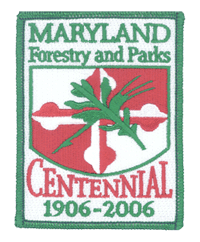 History of Maryland's Forestry Boards
History of Maryland's Forestry Boards
John Blake, Member and former Chair
Frederick County Forest Conservancy District Board
October 25, 2004
In order to understand the present role of forestry boards in comparison with
the law that led to their creation, it may be useful to review their history
briefly. The Maryland Forest Service owes its origin to the creation of the
Board of Forestry as result of the vision of Robert and John Garrett, who
donated over 2,000 acres of mountain woodland in1906 to the state, provided it
would make proper provision for its care. During its early years, the Board
appointed Fred W. Besley state forester, who served through various
organizational changes until 1942; and forest wardens, whose primary function
was the prevention and suppression of forest fire.
Maryland's
Forestry Conservancy District Act of 1943 was one of the most progressive
forestry laws in the nation. The act stated... "It is...the policy of the State to encourage economic management and scientific development of its
woodlands to maintain, conserve, and improve soil resources of the State
to the end that an adequate source of forest products be preserved for the
people...where such interests can be served through cooperative efforts of
private forest landowners, with the assistance of the State, it is to be
the policy of the State to encourage, assist and guide private ownership
in the management and fullest economic development of such privately owned
forest lands."
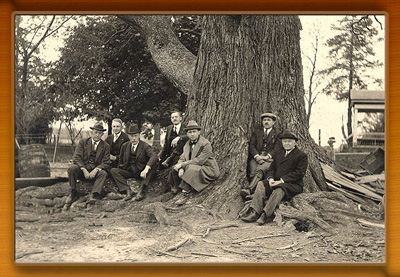 In 1941 the legislature created the Board of Natural Resources, bringing
together under one roof the state’s natural resource conservation agencies,
including what had become the Department of State Forests and Parks. Sparked by
the new State Forester Joseph F. Kaylor, the state passed “the first
comprehensive public regulation of forest practices on private lands east of the
Mississippi River-the Forest Conservancy District Act of 1943.” By then the
public had become sufficiently concerned over the state’s diminishing forest
resources that the act encountered little legislative opposition despite what we
might perceive today as the extensive powers granted to the Department and the
local district boards.
In 1941 the legislature created the Board of Natural Resources, bringing
together under one roof the state’s natural resource conservation agencies,
including what had become the Department of State Forests and Parks. Sparked by
the new State Forester Joseph F. Kaylor, the state passed “the first
comprehensive public regulation of forest practices on private lands east of the
Mississippi River-the Forest Conservancy District Act of 1943.” By then the
public had become sufficiently concerned over the state’s diminishing forest
resources that the act encountered little legislative opposition despite what we
might perceive today as the extensive powers granted to the Department and the
local district boards.
Its broad objectives were the provision of economic and scientific management
of forests in the state through cooperative efforts with private forest
landowners and regulation of forest practices, so as to provide an adequate
source of forest products for the people and a continuing supply of raw
materials for industry and employment for forest communities; soil erosion and
flood control; protection of forests from fire, insects, and disease; protection
of wildlife; preservation of natural beauty; and encouragement of recreational
development. Private owners and loggers were restrained from cutting immature
timber except for stand improvement, and were required to maintain adequate
growing stock and to leave conditions favorable to re-growth or arrange for
restocking of the land after logging. Loggers and other forest products
operators were to be licensed by the state.
Forestry board members were to include persons “representing each of the
major types of forestry and woodworking interest, and at least one person
representing farm woodland owners.” The boards were designed to maintain local
control in keeping with Maryland traditions and the diversity of forest types
and conditions across the state.
According to one contemporary, “The Maryland conservation movement has
advanced enough that timber owners, sawmill operators, and the public view the .
. . state regulations as an extension of public guidance rather than as an
encroachment on individual freedom.”
The state forester affirmed that, “These regulations jeopardize no private
right, unless it be the right to destroy a basic natural resource-and I question
whether any such right exists. Nor do they constitute regimentation. They leave
wide latitude for individual initiative. They offer no threat that any private
business will be taken over or interfered with.”
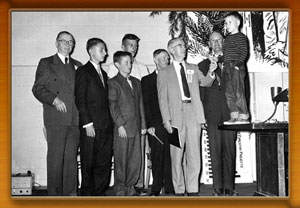 The constitutionality of the Conservancy Act was tested in a suit filed in
1947 by a timber operator in Pennsylvania who refused to register or pay a fee
for a license as the statute provided. In upholding the constitutionality of the
act and the state's right to charge timber license fees, Judge George Henderson
of the Garrett County Circuit Court stated, “It is an appropriate use of the
police power of the state to prevent erosion, preserve forests and conserve the
natural resources of the state.”
The constitutionality of the Conservancy Act was tested in a suit filed in
1947 by a timber operator in Pennsylvania who refused to register or pay a fee
for a license as the statute provided. In upholding the constitutionality of the
act and the state's right to charge timber license fees, Judge George Henderson
of the Garrett County Circuit Court stated, “It is an appropriate use of the
police power of the state to prevent erosion, preserve forests and conserve the
natural resources of the state.”
In today’s terms, the Forest Conservancy District Act was an effort to
establish sustainable forestry for multiple use on private woodlands across the
state. While the basic goal has not changed since then, most of the powers and
duties envisioned for the Boards have either been taken over by the state or
allowed to fade away. Today the state encourages scientifically-based management
of private forestlands through technical assistance and a variety of incentives
but no longer imposes silvicultural regulations.
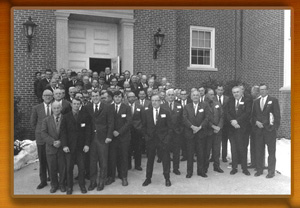 Boards are now made up of volunteers with varying backgrounds and experience.
The chief requirement for appointment is an interest in sustainable forestry and
a desire to see that resources are used wisely and renewed. Board members work
to conserve and improve Maryland’s forest resource and promote forest management
through education and advocacy. They work to improve the forest environment in
urban and suburban as well as rural areas and to educate people about the
benefits of forests and trees.
Boards are now made up of volunteers with varying backgrounds and experience.
The chief requirement for appointment is an interest in sustainable forestry and
a desire to see that resources are used wisely and renewed. Board members work
to conserve and improve Maryland’s forest resource and promote forest management
through education and advocacy. They work to improve the forest environment in
urban and suburban as well as rural areas and to educate people about the
benefits of forests and trees.
For over twenty years they have cooperated with the Department of Natural
Resources Forest Service in running the Natural
Resources Careers Conference, a week-long summer program for high school
students on forestry as a career. They promote tree planting projects and
programs. Board members work closely with foresters throughout the State and
cooperate with other groups having similar goals. The Boards also review
proposed laws and ordinances and represent the interests of forestry with local,
state, and federal legislatures. They are responsible for advising Maryland’s
Forest Service. They may serve as a sounding board and a liaison between private
individuals, forest-related industry, and government agencies.
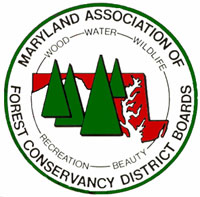 While subject to overall direction from the Forest Service, they retain a
large degree of independence in action to meet local needs. Around 1952 the then
Director of Forestry suggested to the boards that they should form an
organization to represent them and help the Department with testifying before
the legislature. The boards then formed the Association and Greydon Tolson
served three terms as its first President. Since then the Association has been
successful in a number of cases in influencing legislative actions favorable to
forestry. More recently it has been asked to take on new tasks, such as urban
and community forestry, to assist the Forest Service in these times of budgetary
stringency.
While subject to overall direction from the Forest Service, they retain a
large degree of independence in action to meet local needs. Around 1952 the then
Director of Forestry suggested to the boards that they should form an
organization to represent them and help the Department with testifying before
the legislature. The boards then formed the Association and Greydon Tolson
served three terms as its first President. Since then the Association has been
successful in a number of cases in influencing legislative actions favorable to
forestry. More recently it has been asked to take on new tasks, such as urban
and community forestry, to assist the Forest Service in these times of budgetary
stringency.
Under the law, Boards are still required to review and pass on timber harvest
plans if requested to do so, as they may be in certain counties. Under other,
more recent legislation, they approve all forest harvest plans in the Chesapeake
Bay Critical Area. They may also be called upon to play a role in the management
of forest properties subject to easements acquired by local jurisdictions under
the Forest Conservation Act.
Acknowledgements:
History of the Maryland Forestry Boards
Author: John Blake, Member and former Chair,
Frederick County Forest Conservancy District Board
Photographs (top to bottom):
Early
Forestry Board Meeting
Charles
County Forestry Board
Forestry Board Association Meeting